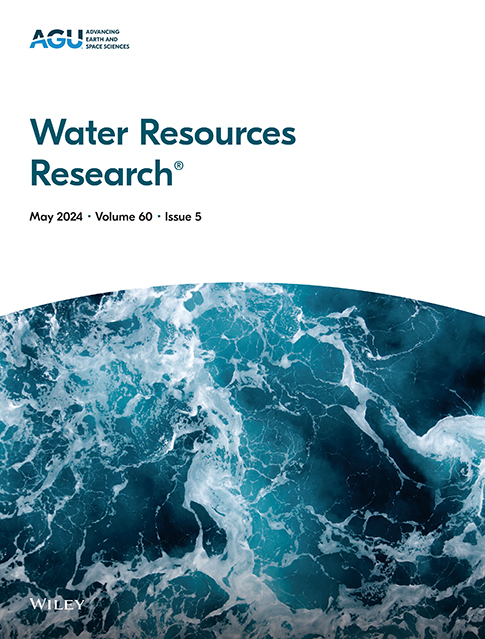Evaluating the Potential to Quantify Salmon Habitat via UAS-Based Particle Image Velocimetry
IF 5
1区 地球科学
Q2 ENVIRONMENTAL SCIENCES
引用次数: 0
Abstract
Continuous, high-resolution data for characterizing freshwater habitat conditions can support successful management of endangered salmonids. Uncrewed aircraft systems (UAS) make acquiring such fine-scale data along river channels more feasible, but workflows for quantifying reach-scale salmon habitats are lacking. We evaluated the potential for UAS-based mapping of hydraulic habitats using spectrally based depth retrieval and particle image velocimetry (PIV) by comparing these methods to a more well-established flow modeling approach. Our results indicated that estimates of water depth, depth-averaged velocity, and flow direction derived via remote sensing and modeling techniques were comparable and in good agreement with field measurements. Predictions of spring-run Chinook salmon (Oncorhynchus tshawytscha) juvenile rearing habitat produced from PIV and model output were similar, with small errors relative to direct field observations. Estimates of hydraulic heterogeneity based on kinetic energy gradients in the flow field were generally consistent between PIV and flow modeling, but errors relative to field measurements were larger. PIV results were sensitive to the velocity index used to convert surface velocities to depth-averaged velocities. Sun glint precluded PIV analysis along the margins of some images and a large degree of overlap between frames was thus required to obtain continuous coverage of the reach. Similarly, shadows cast by riparian vegetation caused gaps in spectrally based bathymetric maps. Despite these limitations, our results suggest that for sites with sufficient water surface texture, UAS-based PIV can provide detailed hydraulic habitat information at the reach scale, with accuracies comparable to traditional field methods and multidimensional flow modeling.利用基于无人机的粒子图像测速技术评估量化鲑鱼栖息地的潜力
描述淡水栖息地条件的连续、高分辨率数据可以支持对濒危鲑鱼的成功管理。无人驾驶飞机系统(UAS)使得沿着河道获取这种精细尺度的数据变得更加可行,但量化河段鲑鱼栖息地的工作流程尚缺乏。通过将基于光谱的深度检索和粒子图像测速(PIV)方法与更完善的流动建模方法进行比较,我们评估了基于无人机的水力栖息地测绘的潜力。我们的研究结果表明,通过遥感和建模技术得出的水深、深度平均速度和流向估计值具有可比性,并且与现场测量结果非常吻合。PIV和模型输出对春季奇努克鲑鱼(Oncorhynchus tshawytscha)幼崽饲养栖息地的预测是相似的,与直接现场观测相比误差较小。基于流场动能梯度的水力非均质性估计在PIV和流动模型之间基本一致,但相对于现场测量的误差更大。PIV结果对用于将地表速度转换为深度平均速度的速度指数(α)$(\alpha)$敏感。太阳闪烁妨碍了沿某些图像边缘的PIV分析,因此需要在帧之间进行很大程度的重叠以获得连续覆盖范围。同样,河岸植被投下的阴影在基于光谱的水深图中造成了空白。尽管存在这些局限性,但我们的研究结果表明,对于具有足够水面纹理的地点,基于无人机的PIV可以在河段尺度上提供详细的水力栖息地信息,其精度可与传统的现场方法和多维流动建模相媲美。
本文章由计算机程序翻译,如有差异,请以英文原文为准。
求助全文
约1分钟内获得全文
求助全文
来源期刊

Water Resources Research
环境科学-湖沼学
CiteScore
8.80
自引率
13.00%
发文量
599
审稿时长
3.5 months
期刊介绍:
Water Resources Research (WRR) is an interdisciplinary journal that focuses on hydrology and water resources. It publishes original research in the natural and social sciences of water. It emphasizes the role of water in the Earth system, including physical, chemical, biological, and ecological processes in water resources research and management, including social, policy, and public health implications. It encompasses observational, experimental, theoretical, analytical, numerical, and data-driven approaches that advance the science of water and its management. Submissions are evaluated for their novelty, accuracy, significance, and broader implications of the findings.
 求助内容:
求助内容: 应助结果提醒方式:
应助结果提醒方式:


